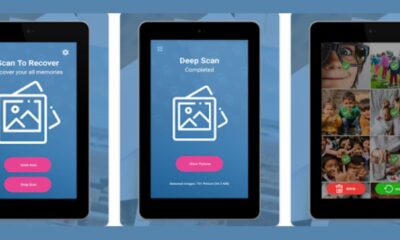Tech
Understanding 127.0.0.1:62893: A Comprehensive Guide

In the world of networking and software development, the cryptic code “127.0.0.1:62893” plays a significant role. This code consists of two parts: the IP address 127.0.0.1, commonly known as localhost, and the port number 62893. Together, they enable various processes in development and networking, including testing applications, understanding client-server communication, ensuring security, and creating isolated environments for development. This article delves deep into the significance, functionalities, and troubleshooting aspects of 127.0.0.1:62893.
What is 127.0.0.1?
Localhost Explained
The IP address 127.0.0.1 is known as localhost, a loopback address used in networking to refer to the host machine itself. This address is crucial for testing and development as it allows applications to communicate with each other on the same device without needing external network connections.
Importance in Development
Localhost is vital for developers to test their applications in a controlled environment. By using 127.0.0.1, developers can simulate network conditions and debug their applications without affecting or requiring access to the internet.
Understanding Port Numbers
What is a Port Number?
A port number is a communication endpoint in networking. It allows different services and applications to distinguish between multiple processes happening on the same IP address. The port number 62893 is one such endpoint.
Port Numbers in Practice
Port numbers range from 0 to 65535, with specific ranges designated for well-known services, registered services, and dynamic or private ports. For instance, HTTP typically uses port 80, while HTTPS uses port 443. Port 62893 falls within the dynamic range, often used for temporary or specific purposes.
The Significance of 127.0.0.1:62893
Testing Applications
Developers frequently use 127.0.0.1:62893 to test their applications locally. By binding a service to this address and port, they can ensure that the application behaves correctly in an isolated environment.
Client-Server Communication
This combination is also essential for understanding and simulating client-server communication. By running a server on 127.0.0.1:62893 and a client on the same machine, developers can study the intricacies of data exchange and network protocols.
Security Considerations
Localhost and specific port numbers are critical in maintaining security. By monitoring port activity, developers can detect unauthorized access attempts, potential exploits, and ensure that sensitive data remains within the local environment.
Common Uses of 127.0.0.1:62893
Debugging Applications
One of the primary uses of 127.0.0.1:62893 is debugging. By running applications locally, developers can identify and fix bugs without affecting live environments. Tools like netstat or lsof can be used to monitor port activity and diagnose issues.
Creating Isolated Environments
Developers often need isolated environments to test new features or configurations. By using 127.0.0.1:62893, they can create such environments without interfering with other processes or requiring additional hardware.
Educational Purposes
Understanding and working with localhost and port numbers is fundamental in networking education. Students and new developers learn about TCP/IP, client-server models, and network security through hands-on experience with 127.0.0.1:62893.
Troubleshooting 127.0.0.1:62893 Errors
Common Error Scenarios
Errors related to 127.0.0.1:62893 can arise from various sources, such as service failures, incorrect port numbers, or firewall settings. Common error messages include “Connection refused,” “Port already in use,” and “Access denied.”
Steps to Fix Errors
- Check the Service: Ensure that the service bound to port
62893is running. Restart the service if necessary. - Verify the Port Number: Double-check the port number in your application’s configuration. Ensure no other service is using the same port.
- Configure Firewalls: Make sure your firewall settings allow connections to port
62893for local traffic. - Refer to Documentation: Consult the application’s documentation for specific instructions on configuring localhost and port settings.
- Use Diagnostic Tools: Utilize tools like
netstatorlsofto identify and troubleshoot issues related to port usage and conflicts.
Advanced Troubleshooting
If basic troubleshooting steps fail, consider more advanced solutions:
- Change Port Numbers: If port
62893is unavailable, try using a different port number within the dynamic range. - Consult Experts: If the issue persists, seek help from experienced developers or IT professionals. Companies like Orage Technologies offer expert services to resolve complex IT issues.
Ensuring Security with 127.0.0.1:62893
Monitoring Port Activity
Regularly monitoring port activity is crucial to ensure security. Tools like Wireshark can help analyze network traffic and detect any anomalies related to port 62893.
Preventing Unauthorized Access
Ensure that sensitive services running on 127.0.0.1:62893 are protected by strong authentication mechanisms. Regularly update and patch your software to protect against vulnerabilities.
Understanding Denial-of-Service (DoS) Attacks
Exposing port 62893 publicly can lead to security risks, including DoS attacks. Ensure that your configurations restrict access to localhost only, preventing external threats.
Case Studies and Real-World Applications
Development Environments
In real-world development scenarios, 127.0.0.1:62893 is used extensively to create local development environments. For instance, a web developer might run a local server on this address and port to test a new website feature before deploying it to production.
Network Simulations
Networking students and professionals use 127.0.0.1:62893 to simulate and study network behavior. By setting up local servers and clients, they can experiment with different protocols and configurations without impacting real networks.
Security Testing
Security experts use 127.0.0.1:62893 to perform penetration testing and vulnerability assessments. By running security tools locally, they can identify and mitigate potential security flaws in a controlled environment.
The Future of Localhost and Port Usage
Evolving Development Practices
As development practices evolve, the use of localhost and specific ports like 62893 will continue to play a crucial role. With the rise of containerization and microservices, managing local environments efficiently will become even more important.
Enhanced Security Measures
Future advancements in security will likely introduce more robust mechanisms to protect local environments. Enhanced monitoring tools and stricter access controls will help mitigate risks associated with localhost and port usage.
Integration with Cloud Services
As cloud services become more prevalent, integrating local development environments with cloud platforms will become more seamless. Developers will be able to test and deploy applications locally before scaling them to the cloud.
Conclusion
The code 127.0.0.1:62893 is more than just a cryptic combination of numbers; it is a fundamental concept in networking and software development. Understanding how localhost and port numbers work together enables developers to create isolated environments, test applications, and ensure security. By troubleshooting errors, monitoring port activity, and staying updated with best practices, developers can harness the full potential of 127.0.0.1:62893 to build efficient, secure, and robust applications. As technology evolves, the significance of localhost and port usage will continue to grow, shaping the future of development and networking.
-

 Entertainment6 months ago
Entertainment6 months agoBaddieHub: Transforming the Landscape of Digital Empowerment
-

 Health & Fitness4 months ago
Health & Fitness4 months agoThe //vital-mag.net blog The Complete Resource for Health
-

 Review8 months ago
Review8 months agoεμφανιση σβισμενον φωτογραφιων: Restoring Deleted Photos Made Easy
-

 Review7 months ago
Review7 months agoGet in Touch with TurboGeekOrg: Maximizing Your Experience on the Ultimate Tech Platform














